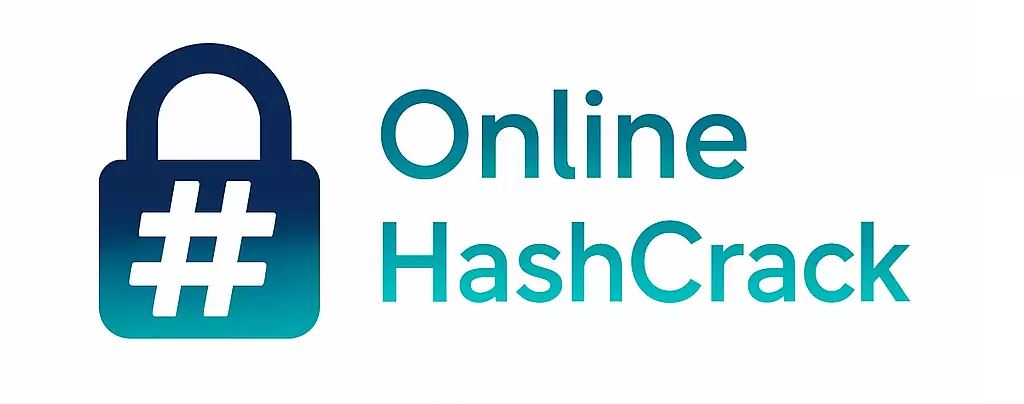1. Introduction
Cisco Type 7 encryption has long been a topic of discussion in the field of cryptography algorithms, especially among network and security professionals managing Cisco devices. While originally designed to obscure passwords and sensitive configuration data, its relevance and efficacy in the age of advanced cryptographic standards are increasingly questioned. This article delves into the technical workings of Cisco Type 7, its historical context, cryptographic weaknesses, and the security implications of its continued use. We also compare it to modern encryption standards, offer guidance for migration, and provide best practices for credential protection in Cisco environments.
2. Understanding Cisco Type 7 Encryption
Cisco Type 7 encryption is a proprietary algorithm implemented in many Cisco IOS devices to obscure plaintext passwords in configuration files. Despite being called "encryption," Type 7 is more accurately described as an obfuscation technique, lacking the robustness of true cryptographic algorithms.
2.1 Historical Context and Purpose
Introduced in the early 1990s, Cisco Type 7 was developed to address a practical need: preventing casual observers from reading sensitive credentials in device configurations. At the time, network devices were often managed via unsecured channels, and configuration files were stored in plaintext. Type 7 provided a basic layer of protection against inadvertent disclosure, not against determined attackers.
The algorithm was never intended as a strong security measure. Cisco’s own documentation has long recommended using stronger alternatives, such as Type 5 (MD5) or Type 8/9 (PBKDF2/SHA-256), for password storage (Cisco: Understanding Password Encryption).
2.2 Technical Overview of Type 7 Algorithm
The Cisco Type 7 algorithm is a simple, reversible cipher based on a variant of the Vigenère cipher. It uses a fixed translation table and a single-byte key derived from the password’s position in the configuration file. The process involves XOR-ing each character of the plaintext password with a value from the translation table, producing an encoded string.
password 7 0822455D0A16
In this example, "0822455D0A16" is the Type 7 encoded representation of the actual password. The algorithm’s simplicity means that anyone with access to the translation table can easily reverse the process and recover the original password.
3. The Cryptographic Weaknesses of Cisco Type 7
Despite its widespread use, Cisco Type 7 encryption is fundamentally flawed from a cryptographic perspective. Its weaknesses are well-documented and have been exploited in numerous security incidents.
3.1 Design Flaws and Limitations
- Lack of Salt: Type 7 does not use a salt, making it vulnerable to precomputed attacks and password reuse across devices.
- Reversible Algorithm: The algorithm is not a one-way hash; it is fully reversible, meaning encoded passwords can be easily decrypted.
- Fixed Translation Table: The use of a static translation table means that the same password will always produce the same encoded output, further weakening security.
- No Brute-Force Resistance: Type 7 offers no resistance to brute-force or dictionary attacks, as the decryption process is computationally trivial.
These limitations make Cisco Type 7 encryption unsuitable for protecting sensitive credentials in any environment where security is a concern.
3.2 Publicly Available Decryption Tools
Due to its simplicity, numerous Type 7 decryption tools are freely available online. These tools can instantly decode Type 7 passwords, rendering the algorithm ineffective against even the most basic attacker. Examples include:
- GNUCitizen: Reversing Cisco Passwords
- SANS Institute: Cisco Type 7 Password Tool
- PacketLife.net: Type 7 Password Decoder
The widespread availability of these tools underscores the critical need to migrate away from Cisco Type 7 encryption in modern networks. For robust assessment and recovery of weakly stored credentials, organizations can leverage Professional Password Audit, Testing & Recovery services to identify and remediate insecure password storage.
4. Comparing Cisco Type 7 to Modern Cryptographic Standards
To fully appreciate the shortcomings of Cisco Type 7 encryption, it is essential to compare it with contemporary cryptographic algorithms that underpin today’s secure digital infrastructure.
4.1 Symmetric and Asymmetric Encryption Fundamentals
Modern cryptography relies on two primary paradigms:
- Symmetric Encryption: Uses the same key for both encryption and decryption (e.g., AES, 3DES). It is efficient for large data volumes and is widely used for data-at-rest and secure communications.
- Asymmetric Encryption: Employs a pair of mathematically related keys (public and private) for encryption and decryption (e.g., RSA, ECC). It is fundamental to secure key exchange and digital signatures.
Both paradigms are designed to withstand sophisticated attacks, leveraging mathematical complexity and, in many cases, incorporating features like salting, key stretching, and iterative hashing to enhance security. For more on modern cryptography, see NIST SP 800-175B.
4.2 Type 7 vs. Industry Best Practices
Cisco Type 7 encryption falls far short of industry best practices for credential protection. Key differences include:
- One-Way Hashing: Modern algorithms use one-way hashes (e.g., bcrypt, PBKDF2, Argon2) that cannot be reversed, even with knowledge of the algorithm.
- Salting and Key Stretching: Salts and multiple iterations make it computationally expensive to brute-force passwords.
- Compliance: Regulatory frameworks such as ISO/IEC 27001 and CIS Controls require strong cryptographic protections for credentials.
In contrast, Cisco Type 7 encryption provides no meaningful resistance to attack and fails to meet the minimum requirements for secure password storage. To learn more about how modern hash algorithms protect credentials, see Hash Algorithms Explained: Secure Password Storage.
5. Security Implications in Contemporary Networks
The continued use of Cisco Type 7 encryption in modern networks introduces significant risks, especially as attackers become more sophisticated and regulatory requirements tighten.
5.1 Risks of Using Cisco Type 7 Today
- Credential Exposure: Attackers who gain access to device configurations can instantly recover plaintext passwords, potentially compromising entire network segments.
- Regulatory Non-Compliance: Organizations may face penalties for failing to protect credentials in accordance with standards such as NIST SP 800-53 and ENISA Guidelines.
- Attack Surface Expansion: Weakly protected credentials can be leveraged for lateral movement, privilege escalation, and further compromise.
- Reputation Damage: Breaches resulting from poor credential management can erode trust and damage organizational reputation.
5.2 Real-World Examples of Exploitation
There have been numerous documented cases where attackers exploited Cisco Type 7 encryption to gain unauthorized access:
- Incident: Misconfigured Network Devices — In several high-profile breaches, attackers obtained configuration backups containing Type 7 passwords, which were then instantly decrypted and used to access critical infrastructure (BleepingComputer: Cisco Routers Hacked).
- Penetration Testing Reports — Security assessments routinely identify Type 7 usage as a critical finding, recommending immediate remediation (CrowdStrike: Network Device Vulnerabilities).
These examples highlight the urgent need to replace Cisco Type 7 encryption with stronger cryptographic protections. For additional insights into effective password recovery and management, see the Password Recovery Tools 2025: Top Picks Ranked.
6. Migrating Away from Cisco Type 7
Transitioning from Cisco Type 7 encryption to more secure alternatives is a critical step for any organization seeking to strengthen its security posture and achieve compliance with modern standards.
6.1 Recommended Secure Alternatives
Cisco offers several more secure options for password storage:
- Type 5 (MD5): While MD5 is now considered weak, it is still a significant improvement over Type 7 as it is a one-way hash. However, it is susceptible to collision and brute-force attacks and should be avoided for new deployments.
- Type 8 (PBKDF2-SHA256): Introduced in Cisco IOS 15.3(3) and later, Type 8 uses PBKDF2 with SHA-256, providing strong resistance to brute-force attacks through key stretching and salting.
- Type 9 (scrypt): Also available in modern Cisco devices, Type 9 uses the scrypt algorithm, which is highly resistant to hardware-accelerated brute-force attacks.
For more information, refer to Cisco: Password Encryption Types. To understand the strengths and weaknesses of various password hashing algorithms, check Bcrypt vs Argon2: Choosing Strong Hashing Today.
6.2 Steps for Transitioning to Stronger Encryption
Migrating away from Cisco Type 7 encryption involves several key steps:
- Inventory Credentials: Identify all devices and configuration files using Type 7 passwords.
- Upgrade Firmware: Ensure devices are running IOS versions that support Type 8 or Type 9 encryption.
- Reconfigure Passwords: Replace Type 7 passwords with stronger alternatives using the appropriate commands (e.g.,
enable secretfor Type 5/8/9). - Audit and Test: Verify that all credentials are stored using secure algorithms and conduct penetration testing to confirm remediation.
- Monitor Compliance: Regularly review configurations to ensure continued adherence to best practices.
For detailed migration guidance, consult CIS Control 5: Secure Configuration. You may also consider reviewing the Password Policy Best Practices 2025 for practical steps in enforcing strong password storage and management.
7. Best Practices for Credential Protection in Cisco Environments
To maximize security and minimize risk, organizations should adopt the following best practices for credential protection in Cisco environments:
- Avoid Type 7: Never use Cisco Type 7 encryption for any password or secret.
- Use Strong Algorithms: Prefer Type 8 or Type 9 for all new credentials; avoid Type 5 unless absolutely necessary.
- Enforce Strong Passwords: Implement password policies that require complexity, length, and regular rotation.
- Limit Access: Restrict access to device configurations and use role-based access control (RBAC) wherever possible.
- Encrypt Backups: Store configuration backups in encrypted form and limit access to backup files.
- Monitor and Audit: Continuously monitor for unauthorized changes and audit credential usage.
- Educate Staff: Train network administrators on the risks of weak encryption and the importance of secure credential management.
For further best practice recommendations, see the SANS Institute: Password Protection Best Practices. You can also explore how to configure a Bruteforce Attack to test the resilience of your chosen password storage methods.
8. Conclusion
Cisco Type 7 encryption is a legacy algorithm that no longer meets the security requirements of modern networks. Its inherent weaknesses, ease of decryption, and failure to comply with industry standards make it unsuitable for protecting sensitive credentials. Organizations should prioritize migrating to stronger cryptographic algorithms, such as Type 8 or Type 9, and adopt comprehensive best practices for credential management. By doing so, they can significantly reduce their attack surface, achieve regulatory compliance, and safeguard their critical infrastructure against evolving threats.
9. Further Reading and References
- Cisco: Understanding Password Encryption
- Cisco: Password Encryption Types
- NIST SP 800-175B: Guideline for Using Cryptographic Standards
- CIS Controls
- SANS Institute: Cisco Type 7 Password Tool
- PacketLife.net: Type 7 Password Decoder
- BleepingComputer: Cisco Routers Hacked
- CrowdStrike: Network Device Vulnerabilities
- SANS Institute: Password Protection Best Practices
- ISO/IEC 27001
- ENISA: Security Measures Guidelines
- CIS Control 5: Secure Configuration


